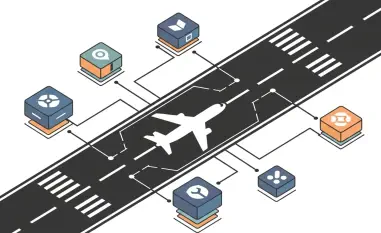As artificial intelligence (AI) technologies permeate various facets of society, ensuring their secure and ethical deployment becomes paramount to sustaining public trust. The rapid integration of AI into essential systems necessitates robust security frameworks designed to mitigate risks and address ethical concerns. These frameworks play a critical role not only in safeguarding technology but also in encouraging innovation. Globally, organizations and regulatory bodies are prioritizing the establishment of structures that assure the reliability and trustworthiness of AI systems. This multifaceted undertaking requires continuous evolution and collaborative effort across governmental, regulatory, and industry domains, as technology continues to advance and presents new challenges.
Systematic Management of AI Risks
NIST’s AI Risk Management Framework
Risk management has emerged as a cornerstone of AI security frameworks, exemplified by the National Institute of Standards and Technology (NIST) and its AI Risk Management Framework (AI RMF). Introduced in 2023, the framework outlines four core functions—Govern, Map, Measure, and Manage—that operate in a cyclical rather than linear fashion. This iterative process ensures a comprehensive assessment and mitigation of AI-related risks throughout an AI system’s lifecycle. By employing these functions, organizations can systematically identify and address potential vulnerabilities and ethical issues, enhancing the safety and reliability of AI applications. The AI RMF serves as a critical tool for policymakers, developers, and stakeholders striving to balance ethical considerations and technological advancement.
International Standards and Ethical AI Practices
The emphasis on ethical AI practices is also echoed by the International Organization for Standardization (ISO), particularly through its ISO/IEC 42001:2023 standard. This framework sets forth principles of ethical, secure, and transparent AI deployment, providing organizations with detailed guidance for managing AI risks and protecting data. ISO’s focus ensures that companies maintain high standards of operation while addressing societal concerns over AI’s impact. Together with guidelines on preventing bias and discrimination, the ISO standard promotes a responsible approach to AI development and implementation. By setting these benchmarks, ISO aims to harmonize practices across different entities and nations, instilling confidence in AI technologies through adherence to consistent, universally recognized standards.
Regulation and Compliance Requirements
European Union’s AI Act
Policies and regulations are pivotal in shaping AI security frameworks, evident from the European Union’s Artificial Intelligence Act. Effective since August 2024, this legislation demands comprehensive cybersecurity measures for high-risk AI systems and imposes substantial penalties for non-compliance. It mandates thorough assessments of susceptibility to risks and breaches, guiding AI applications towards ethical and secure deployment. By emphasizing regulatory compliance, the European Union promotes AI development that aligns with societal values, aiming to instill a cohesive approach to managing AI technology. This regulation acts as a marker for other nations, highlighting the importance of integrating legal standards into AI innovation while respecting ethical boundaries.
Industry Initiatives and Collaborative Efforts
Industry-led initiatives further contribute to AI security. The Cloud Security Alliance (CSA) is scheduled to release its AI Controls Matrix (AICM), delineating guidelines that assist organizations in securely developing and deploying AI technologies across various sectors. Similarly, the Open Web Application Security Project (OWASP) has pinpointed security vulnerabilities in large language models (LLMs), offering insights into safeguarding AI applications from risks such as prompt injection and data poisoning. These efforts reflect the industry’s proactive stance in fortifying AI security standards, fostering collaboration among stakeholders to address emerging threats. Together, these initiatives underline the necessity for adaptable strategies and the importance of unified efforts in enhancing AI system security.
Actionable Steps for AI Framework Implementation
Governance and Security Controls
Implementing effective AI security frameworks demands robust governance and security controls within organizations. IBM, for instance, advocates for comprehensive AI governance approaches that mitigate risks linked to bias, privacy infringements, and potential misuse while promoting innovation. Such governance structures encompass risk management strategies and transparency in AI system operation, fostering public trust through accountability and ethical practices. Additionally, initiatives like the Adversarial Robustness Toolbox provide tools for evaluating and verifying machine learning models against adversarial threats, enabling developers to safeguard systems from potential risks. These resources highlight the importance of established governance in protecting AI systems and have proven instrumental in guiding organizations toward secure technology deployment.
Adaptive Strategies for AI Security
Recognizing the need for continuous adaptation, AI security frameworks underscore collaborative efforts among entities worldwide. The Cybersecurity and Infrastructure Security Agency (CISA) emphasizes a secure-by-design philosophy that advocates for proactive cybersecurity risk management, transparency in AI usage, and comprehensive information-sharing protocols. Such adaptive strategies require leveraging the concurrent evolution of AI technologies and responding dynamically to emerging threats through periodic revisions of frameworks like the AI Controls Matrix. This concerted endeavor ensures that AI deployments remain secure and trustworthy, paving the way for innovative applications that contribute positively to societal advancement. Together, these approaches demonstrate a shared commitment to evolving AI security standards in tandem with technological progression.
The Future Trajectory of AI Security
As artificial intelligence (AI) technologies become deeply embedded in various societal facets, ensuring their secure and ethical use is crucial for maintaining public trust. The swift assimilation of AI into vital systems demands sturdy security frameworks that are designed to minimize risks and address ethical issues associated with its use. These frameworks are not only pivotal for protecting technology but also for fostering innovation. Worldwide, organizations and regulatory entities are focusing on establishing reliable structures that guarantee the dependability and trustworthiness of AI systems. This complex task necessitates ongoing evolution and a collaborative approach, bringing together efforts from governmental bodies, regulatory authorities, and industry leaders. As technology progresses, it continuously poses new challenges, demanding adaptive solutions and cooperative strategies to navigate the evolving landscape of AI, ensuring its benefits are maximized while potential liabilities are constrained.













